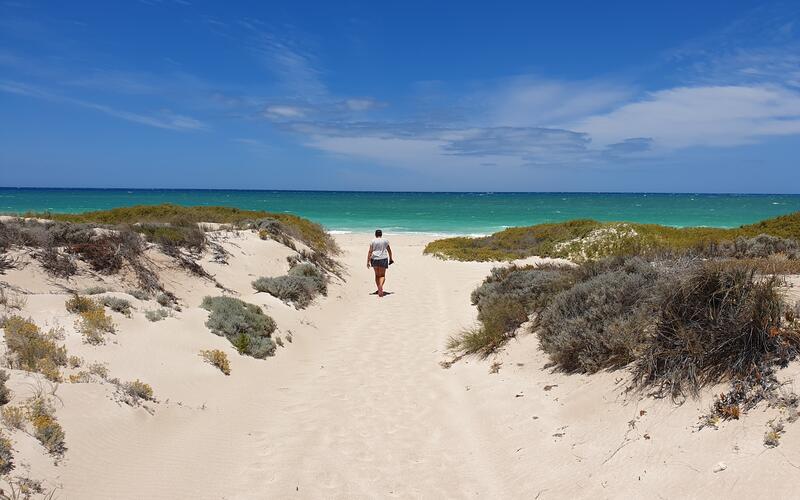Journey to a lost world: How modeling ecology might help restore pre-colonial ecosystems

Journey to a lost world: How modeling ecology might help restore pre-colonial ecosystems
The sand dunes before you gleam white and green, speckled with desert plants. Bright rodent eyes shine from burrows beneath the shrubs. Wrens flit furtively between the low branches, and the Shark Bay sea rushes in behind you. This is what Dutchman Dirk Hartog, the first European to land in Western Australia, experienced in 1616.
Peterson, Katie A., Megan D. Barnes, Cailan Jeynes-Smith, Saul Cowen, Lesley Gibson, Colleen Sims, Christopher M. Baker, and Michael Bode. 2021. “Reconstructing Lost Ecosystems: A Risk Analysis Framework for Planning Multispecies Reintroductions under Severe Uncertainty.” Journal of Applied Ecology 58 (10): 2171–2184. doi:10.1111/1365-2664.13965.
The site of Dirk Hartog’s landing is now a national park called “Dirk Hartog Island” – about the size of Chicago. The Indigenous Malgana-speaking people called the island Wirruwanna and appreciated its beauty and abundance for thousands of years. The island’s plant and animal community no longer looks like it did when Hartog landed, but an ambitious project by the Western Australian Department of Biodiversity, Conservation and Attractions is underway to restore 13 lost species to the island and “Return to 1616.” The authors of a recent paper in the Journal of Applied Ecology evaluated the risks and rewards of different approaches to recreate the lost world.
The attempt to recreate an entire ecosystem is groundbreaking. It represents an opportunity to both generate tourism for Western Australia and protect several endangered species. But a Return to 1616 comes with huge challenges. The conservation dynamics are incredibly complex as the animals compete for food, shelter, and water in a dry scrub environment where they have been absent for hundreds of years. For example, the endangered Shark Bay Bandicoot, a snuffling predator, once hunted the endangered mouse-like Dibbler across the sands of Hartog Island. Introduce these two species in the same location at the same time, and a collision is inevitable. It could in turn prevent successful establishment of the Dibbler population.
The authors, led by Dr. Katie Peterson, modeled 23 alternative strategies to reintroduce the eight marsupial, four rodent, and one bird species selected for this project. After the successful reintroduction of two Hare-wallaby species, the authors sought to understand the risk of failure for the other species. For instance, if a prey species is introduced first, there is more time for its population to grow before facing competition or predation from other species. But if scientists wait too long to introduce a predator, the prey might overpopulate the island and compete for precious resources amongst themselves, leading to catastrophic boom and bust cycles. Location matters too. Each species needs space to establish itself in the right habitat before other species arrive and compete. The authors predict that by paying attention to interactions between species, an average of 12.5 out of the 13 species can be reintroduced successfully. Some species survived regardless of the scenario modeled, while others thrived in one scenario, but couldn’t gain a foothold in others. This form of modeled reintroduction could help conservationists focus on the species most at risk of failure.
The authors of this paper explore how to make the “Return to 1616”, and other conservation projects, more effective. Importantly, they show the power of integrated models in predicting how species on the same island might support or prevent one another’s survival. As to what the goals of conservation should be – and how best to include Indigenous peoples and other local communities – it is up to all of us to figure out what the world we want to live in looks like. The historical baselines we set, such as 1616, are choices we are making as we and our fellow residents of Earth navigate an uncertain future. The authors of this paper have given us one more method for modeling that future.
